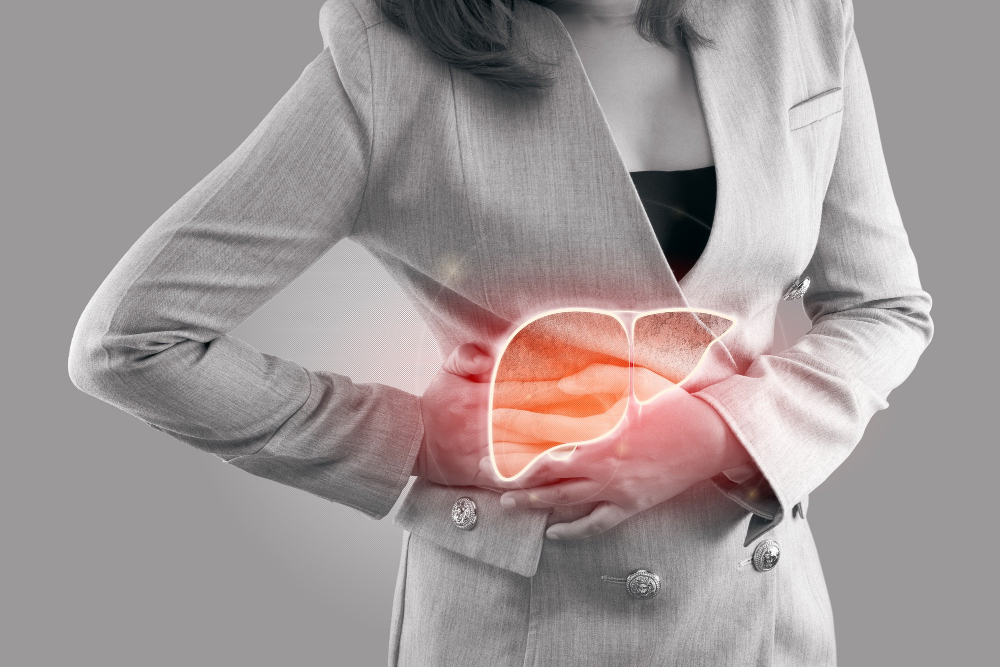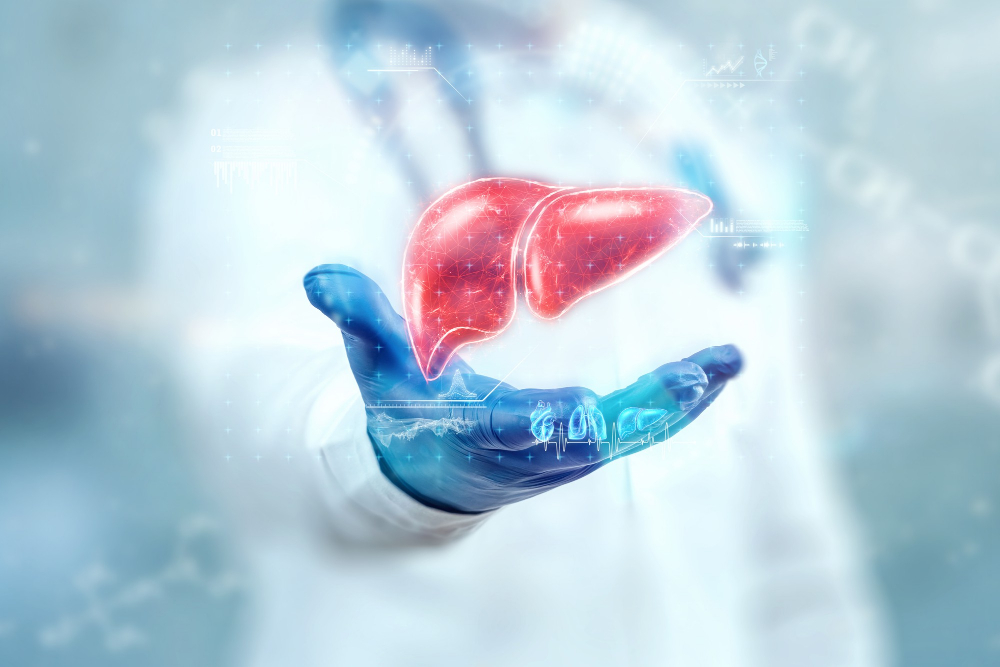General Information About Liver Cancer
Liver cancer is a disease in which malignant (cancer) cells form in the tissues of the liver.
The liver is one of the largest organs in the body. It has two lobes and fills the upper right side of the abdomen inside the rib cage. Three of the many important functions of the liver are:
- To filter harmful substances from the blood so they can be passed from the body in stools and urine.
- To make bile to help digest fats from food.
- To store glycogen (sugar), which the body uses for energy.
Finding and treating liver cancer early may prevent death from liver cancer.
Being infected with certain types of the hepatitis virus can cause hepatitis and may lead to liver cancer.
Hepatitis is most commonly caused by the hepatitis virus. Hepatitis is a disease that causes inflammation (swelling) of the liver. Damage to the liver from hepatitis that lasts a long time can increase the risk of liver cancer.
Hepatitis B (HBV) and hepatitis C (HCV) are two types of the hepatitis virus. Chronic infection with HBV or HCV can increase the risk of liver cancer.
1. Hepatitis B
HBV is caused by contact with the blood, semen, or other body fluid of a person infected with HBV virus. The infection can be passed from mother to child during childbirth, through sexual contact, or by sharing needles that are used to inject drugs. It can cause scarring of the liver (cirrhosis) that may lead to liver cancer.
2. Hepatitis C
HCV is caused by contact with the blood of a person infected with HCV virus. The infection can be spread by sharing needles that are used to inject drugs or, less often, through sexual contact. In the past, it was also spread during blood transfusions or organ transplants. Today, blood banks test all donated blood for HCV, which greatly lowers the risk of getting the virus from blood transfusions. It can cause scarring of the liver (cirrhosis) that may lead to liver cancer.
Liver Cancer Prevention
Avoiding risk factors and increasing protective factors may help prevent cancer.
Avoiding cancer risk factors may help prevent certain cancers. Risk factors include smoking, being overweight, and not getting enough exercise. Increasing protective factors such as quitting smoking and exercising may also help prevent some cancers. Talk to your doctor or other health care professional about how you might lower your risk of cancer.
Chronic Hepatitis B and C infections are risk factors that may lead to liver cancer.
Having chronic hepatitis B (HBV) or chronic hepatitis C (HCV) increases the risk of developing liver cancer. The risk is even higher for people with both HBV and HCV, and for people who have other risk factors in addition to the hepatitis virus. Men with chronic HBV or HCV infection are more likely to develop liver cancer than are women with the same chronic infection.
Chronic HBV infection is the leading cause of liver cancer in Asia and Africa. Chronic HCV infection is the leading cause of liver cancer in North America, Europe, and Japan.
The following are other risk factors that may increase the risk of liver cancer:
1. Cirrhosis
The risk of developing liver cancer is increased for people who have cirrhosis, a disease in which healthy liver tissue is replaced by scar tissue. The scar tissue blocks the flow of blood through the liver and keeps it from working as it should. Chronic alcoholism and chronic hepatitis infections are common causes of cirrhosis. People with HCV-related cirrhosis have a higher risk of developing liver cancer than people with cirrhosis related to HBV or alcohol use.
2. Heavy alcohol use
Heavy alcohol use can cause cirrhosis, which is a risk factor for liver cancer. Liver cancer can also occur in heavy alcohol users who do not have cirrhosis. Heavy alcohol users who have cirrhosis are ten times more likely to develop liver cancer, compared with heavy alcohol users who do not have cirrhosis.
Studies have shown there is also an increased risk of liver cancer in people with HBV or HCV infection who use alcohol heavily.
3. Aflatoxin B1
The risk of developing liver cancer may be increased by eating foods that contain aflatoxin B1 (poison from a fungus that can grow on foods, such as corn and nuts, that have been stored in hot, humid places). It is most common in sub-Saharan Africa, Southeast Asia, and China.
4. Nonalcoholic steatohepatitis (NASH)
Nonalcoholic steatohepatitis (NASH) is a condition that can cause scarring of the liver (cirrhosis) that may lead to liver cancer. It is the most severe form of nonalcoholic fatty liver disease (NAFLD), where there is an abnormal amount of fat in the liver. In some people, this can cause inflammation (swelling) and injury to the cells of the liver.
Having NASH-related cirrhosis increases the risk of developing liver cancer. Liver cancer has also been found in people with NASH who do not have cirrhosis.
5. Cigarette smoking
Cigarette smoking has been linked to a higher risk of liver cancer. The risk increases with the number of cigarettes smoked per day and the number of years the person has smoked.
6. Other conditions
Certain rare medical and genetic conditions may increase the risk of liver cancer. These conditions include the following:
- Untreated hereditary hemochromatosis (HH).
- Alpha-1 antitrypsin (AAT) deficiency.
- Glycogen storage disease.
- Porphyria cutanea tarda (PCT).
- Wilson disease.
The following protective factors may decrease the risk of liver cancer:
1. Hepatitis B vaccine
Preventing HBV infection (by being vaccinated for HBV as a newborn) has been shown to lower the risk of liver cancer in children. It is not yet known if being vaccinated lowers the risk of liver cancer in adults.
2. Treatment for chronic hepatitis B infection
Treatment options for people with chronic HBV infection include interferon and nucleos(t)ide analog (NA) therapy. These treatments may reduce the risk of developing liver cancer.
3. Reduced exposure to aflatoxin B1
Replacing foods that contain high amounts of aflatoxin B1 with foods that contain a much lower level of the poison can reduce the risk of liver cancer.
Source: http://www.chinancpcn.org.cn/cancerMedicineClassic/guideDetail?sId=CDR433423&type=1
Post time: Aug-21-2023



